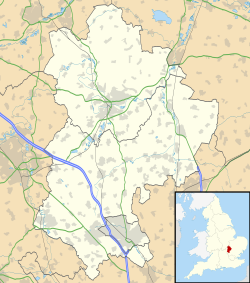| Totternhoe Castle | |
|---|---|
| Bedfordshire, England | |
 Remaining earthworks | |
| Site information | |
| Type | Motte-and-bailey |
| Condition | Earthworks |
| Location | |
Shown within Bedfordshire | |
| Coordinates | 51°53′20″N0°34′49″W / 51.8889°N 0.5803°W |
| Grid reference | grid reference SP978221 |
Totternhoe Castle is a Norman castle in Totternhoe, Bedfordshire. Only earthworks survive. It is a Scheduled Monument, and part of Totternhoe Knolls Site of Special Scientific Interest. [1] [2] [3]
